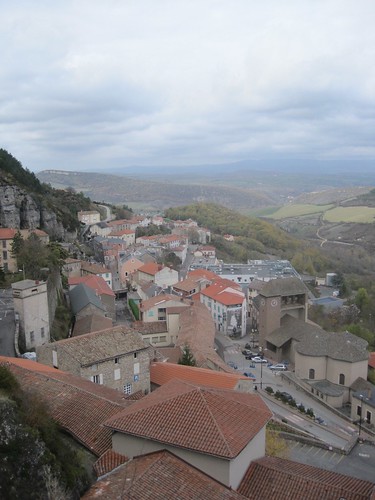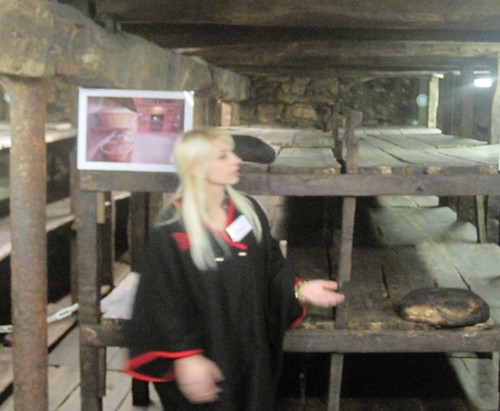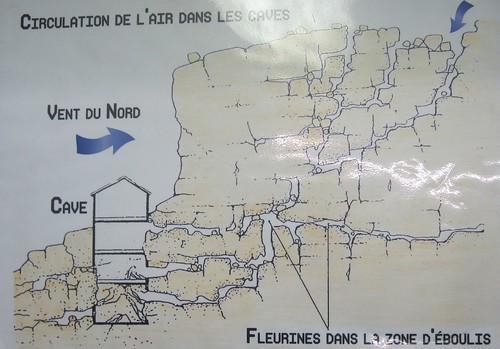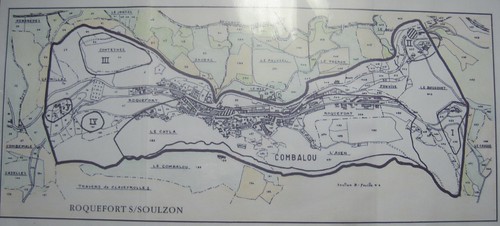I love Roquefort cheese. On a fresh baguette with a glass of light red wine, there is simply no better snack. Mary Ann and I took advantage of our trip to Millau to hop over to the home of the famous Roquefort cheese producers. Several companies provide tours of their cellars along with a free tasting. We decided to patronize the Papillon brand on the advice of Chusclan local. He swore that their black label was the best in the business. That was a test we were willing to take.
Along the way we learned that the modern process for making A.O.C. approved Roquefort cheese is somewhat more complicated that the fairy tale. It begins by collecting sheep's milk from within the region. The Lacaune ewe contains an enzyme that causes the cheese to curd naturally around 30 degrees C. The curds are then collected and seeded with the penicillium mold.
This mold must also be harvested locally from bread loaves aged in the approved cellars. For quality control the loaves are seeded with the specifc strain known to be safe and tasty. 600 g of penicillium can be harvested from each round loaf, but it only takes 100 g to produce one ton (metric) of cheese.
After excess liquid is drained from the cheese wheels, they are salted and taken to the cave for aging. The aging process for both the mold bread loaves and the cheese wheels can only take place in the natural Roquefort caves. In four to six months time the cheese is ready to be packaged and distributed.
 Ancient seismic activity opened up fissures in the rock that allow the perfect natural temperature and humidity regulation for aging cheese. Therefore the entire A.O.C. region for Roquefort cheese is only about 4.5 km long. As such, really the only thing in Roquefort are the cheese factories. Though it's perched on a hillside, it feels oddly industrial.
Ancient seismic activity opened up fissures in the rock that allow the perfect natural temperature and humidity regulation for aging cheese. Therefore the entire A.O.C. region for Roquefort cheese is only about 4.5 km long. As such, really the only thing in Roquefort are the cheese factories. Though it's perched on a hillside, it feels oddly industrial.Unlike dairy cattle, the Lacaune ewe's gestation cycle is seasonal. Therefore during our visit to the caves in mid-November they were completely empty. Bread production will begin again around December, and cheese production will peak around June. The cheese keeps well in its specially designed tinfoil wrapping and is good year round.
Of course, our favorite variety was the black label. Though in fairness, we did not try the ultra-premium super-moldy cheese that Pampillion markets for special occasions. As it is, the black label is not available in supermarkets. Our tour guide did let us in on a secret. The Bio (or organic) variety of their cheese is most similar to their popular black label and is also available in many French grocery stores. We purchased a quarter wheel and convinced ourselves that it would last until our eventual return to the States. That seems highly unlikely now that we sneak a sample at every opportunity.




![Reblog this post [with Zemanta]](http://img.zemanta.com/reblog_e.png?x-id=b6932a32-4bed-477a-af45-b5cf98bc0ae8)

No comments:
Post a Comment